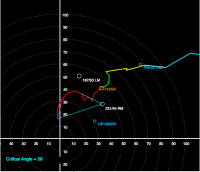Kyle Brittain
EF1
Determining storm motion is relatively easy when you can observe it in real time, however, it becomes trickier when forecasting it. SRH (Storm relative helicity) is highly sensitive to where storm motion is plotted, so greater accuracy for its placement yields more realistic progged SRH values.
What is the best way to estimate where to plot storm motion? The halfway point on the mean shear vector? A possibly painstaking average of all u and v coordinates? Using the 700mb plot as a proxy? The approximate speed and direction from the "Storm Motion" product on twisterdata? Placement looks relatively straightforward on a perfectly clockwise looping or straight line hodo, but these things are seldom perfect, ya know?
Also, in the same vein, in order to generate forecasted SRH values, a model must have storm motion plotted on a hodograph. How is that determined?
What is the best way to estimate where to plot storm motion? The halfway point on the mean shear vector? A possibly painstaking average of all u and v coordinates? Using the 700mb plot as a proxy? The approximate speed and direction from the "Storm Motion" product on twisterdata? Placement looks relatively straightforward on a perfectly clockwise looping or straight line hodo, but these things are seldom perfect, ya know?
Also, in the same vein, in order to generate forecasted SRH values, a model must have storm motion plotted on a hodograph. How is that determined?

